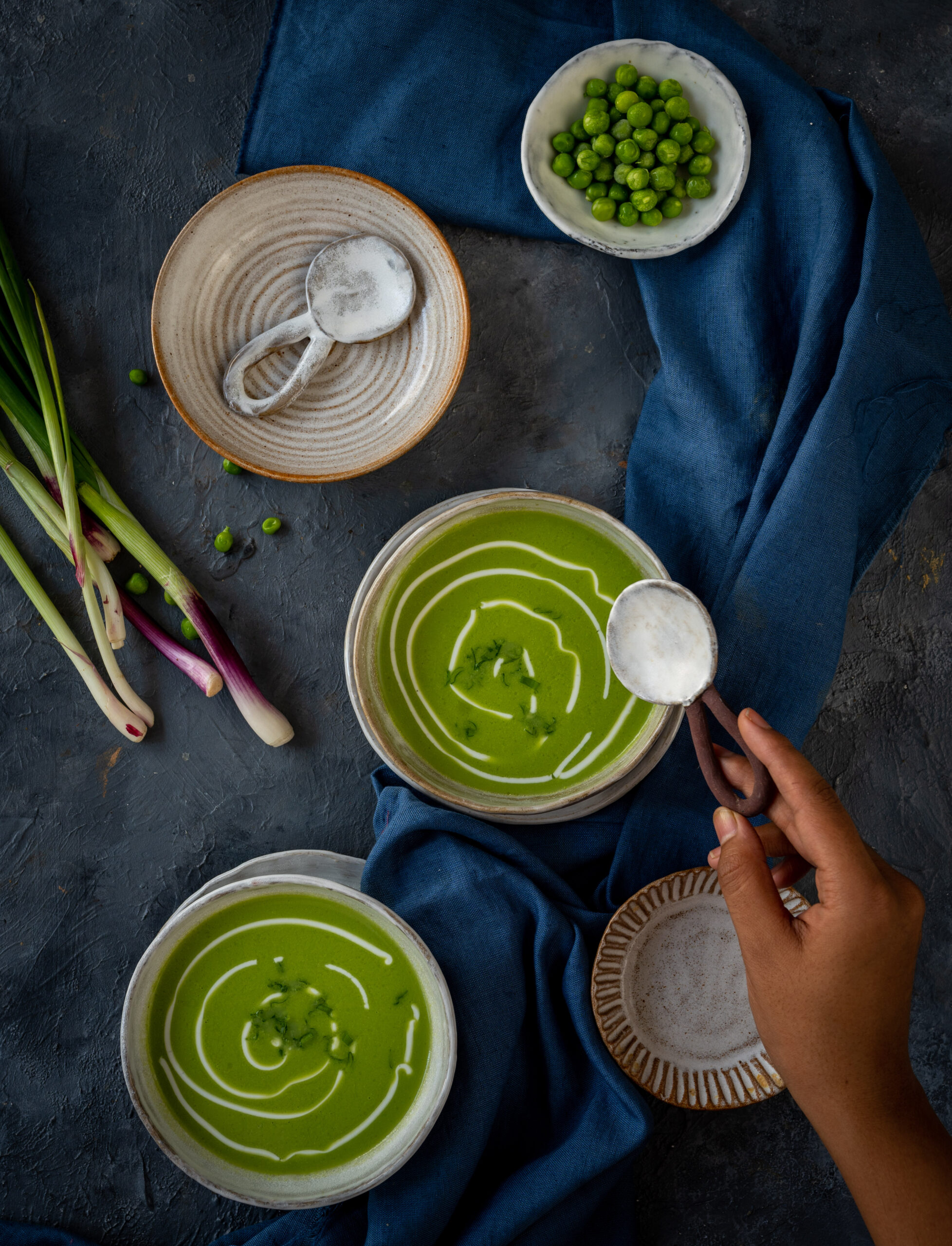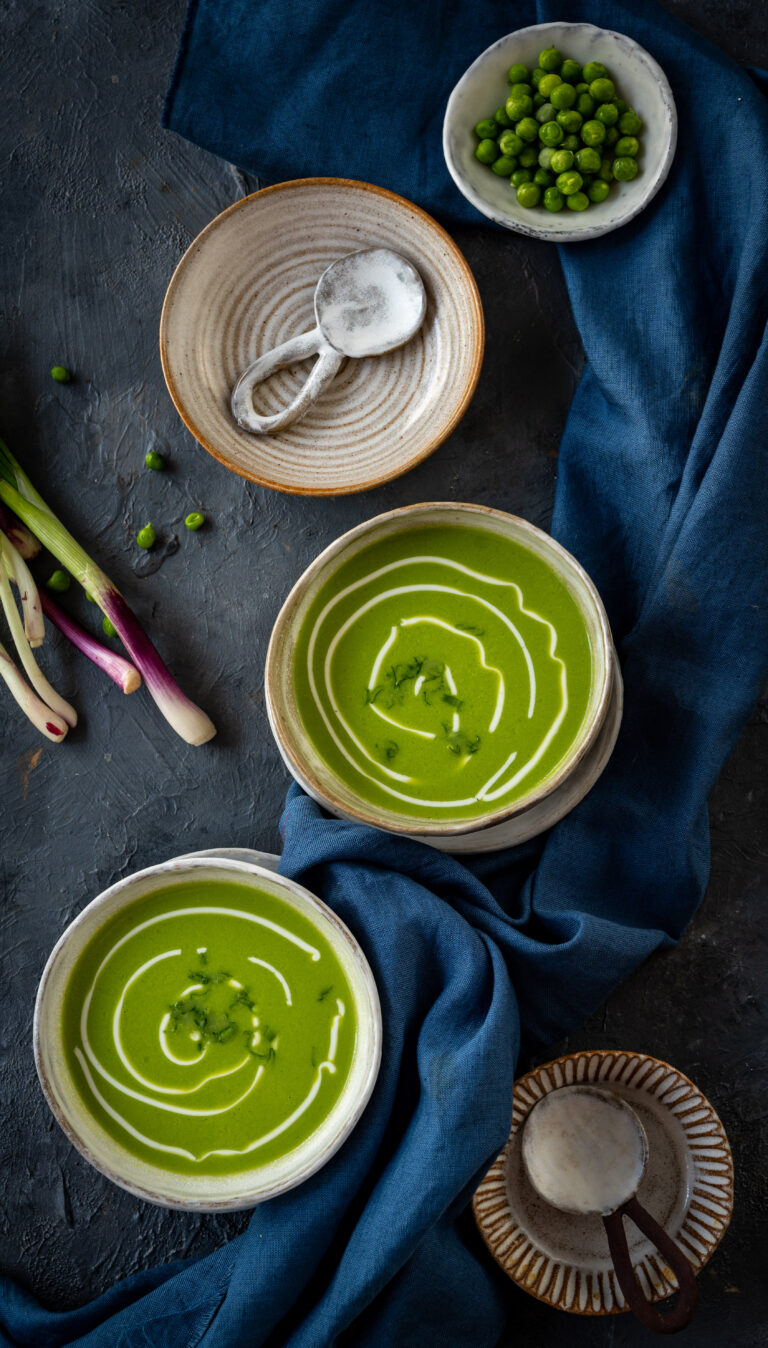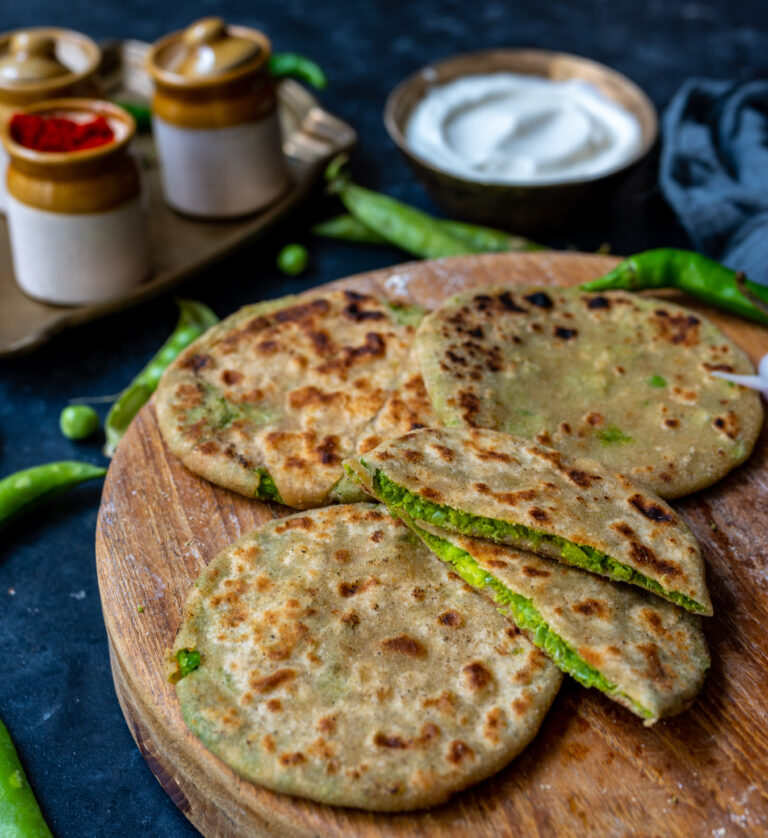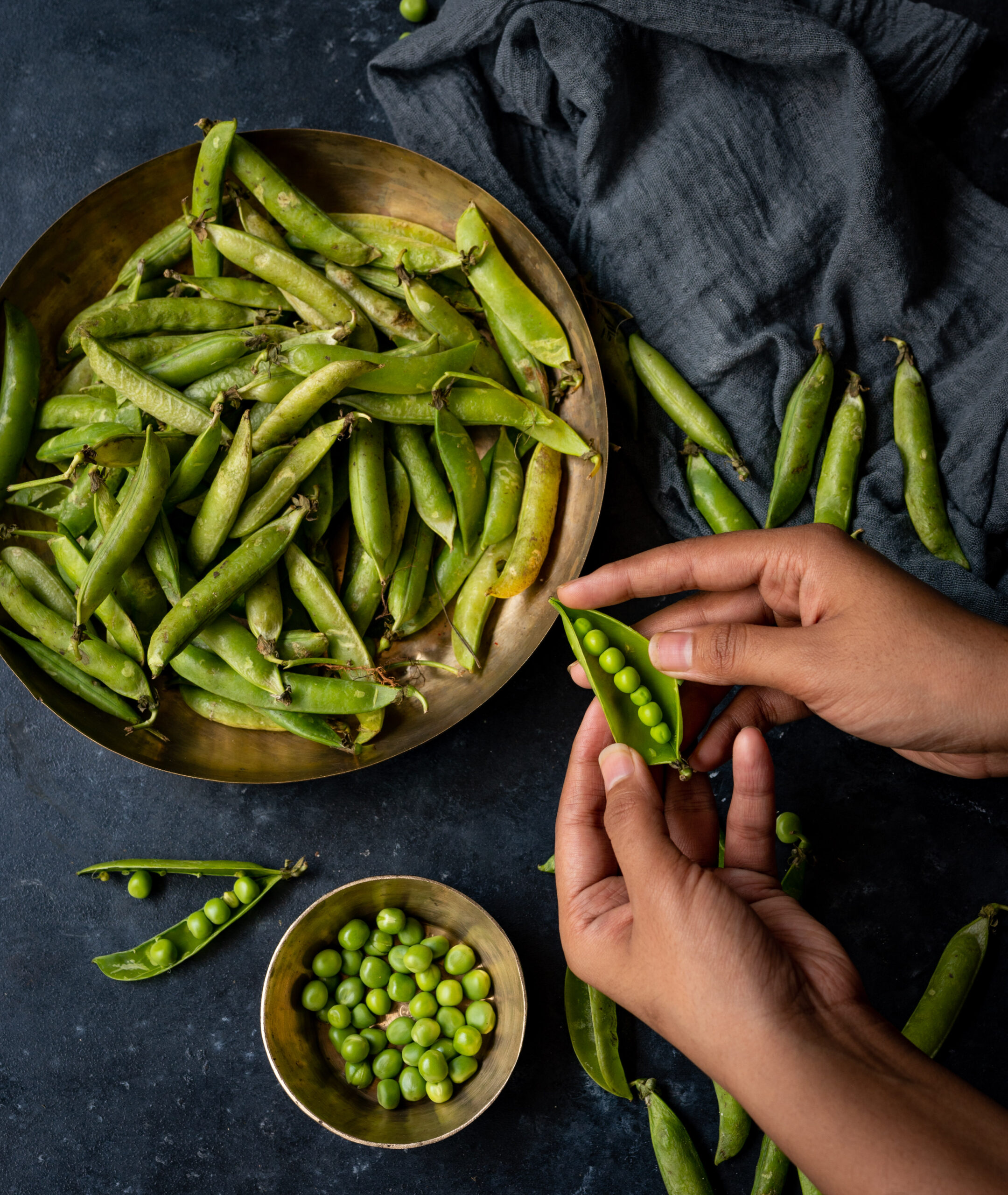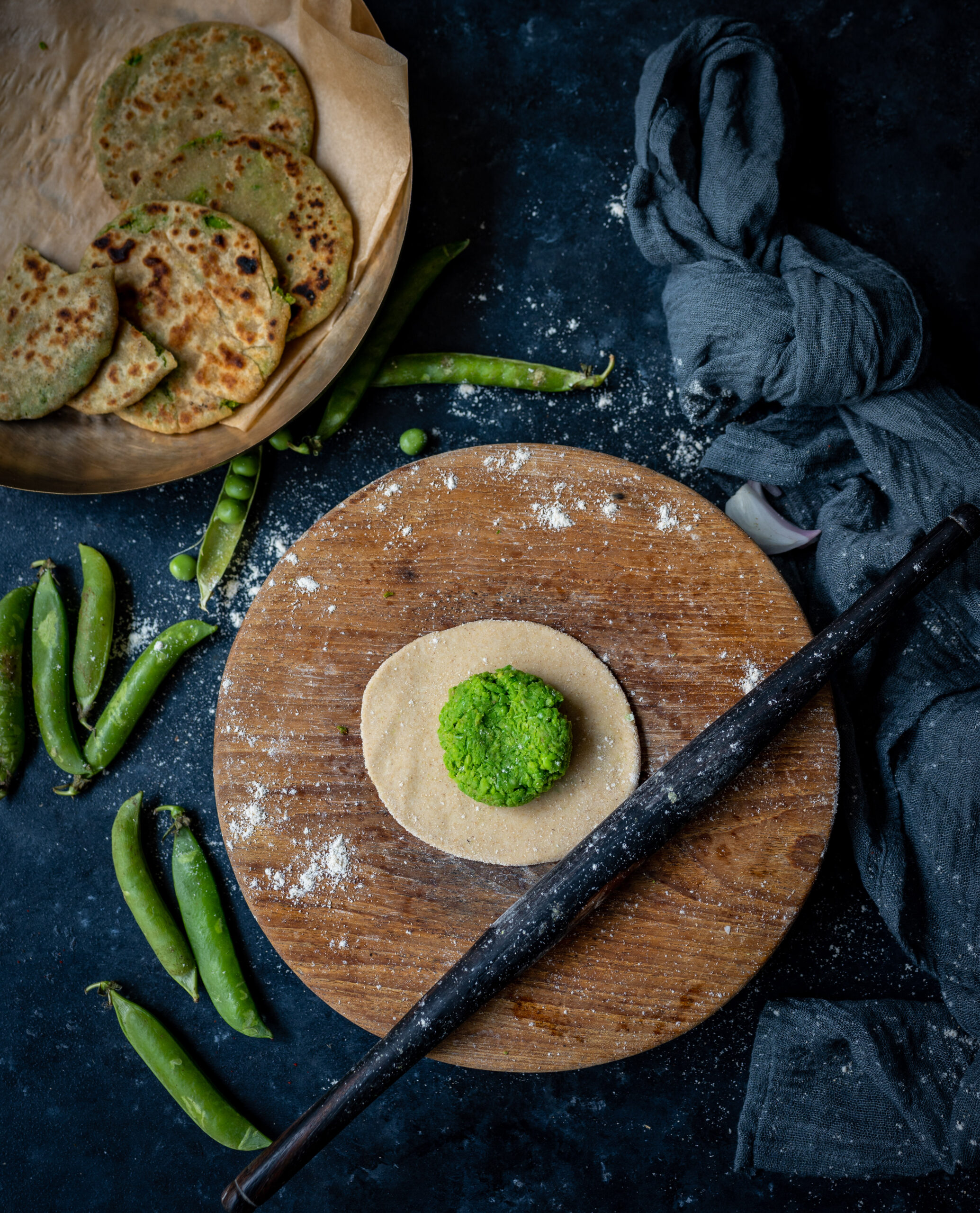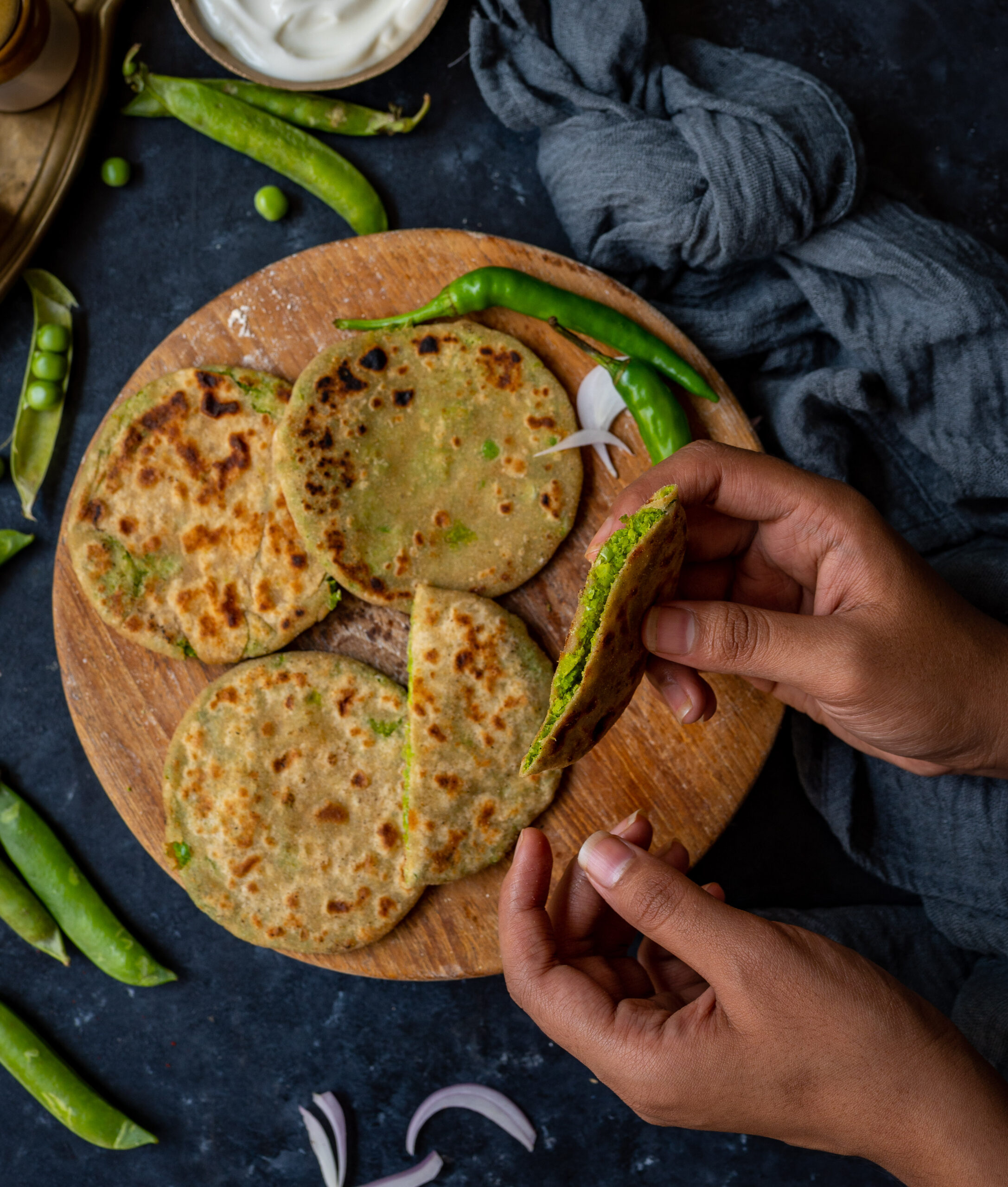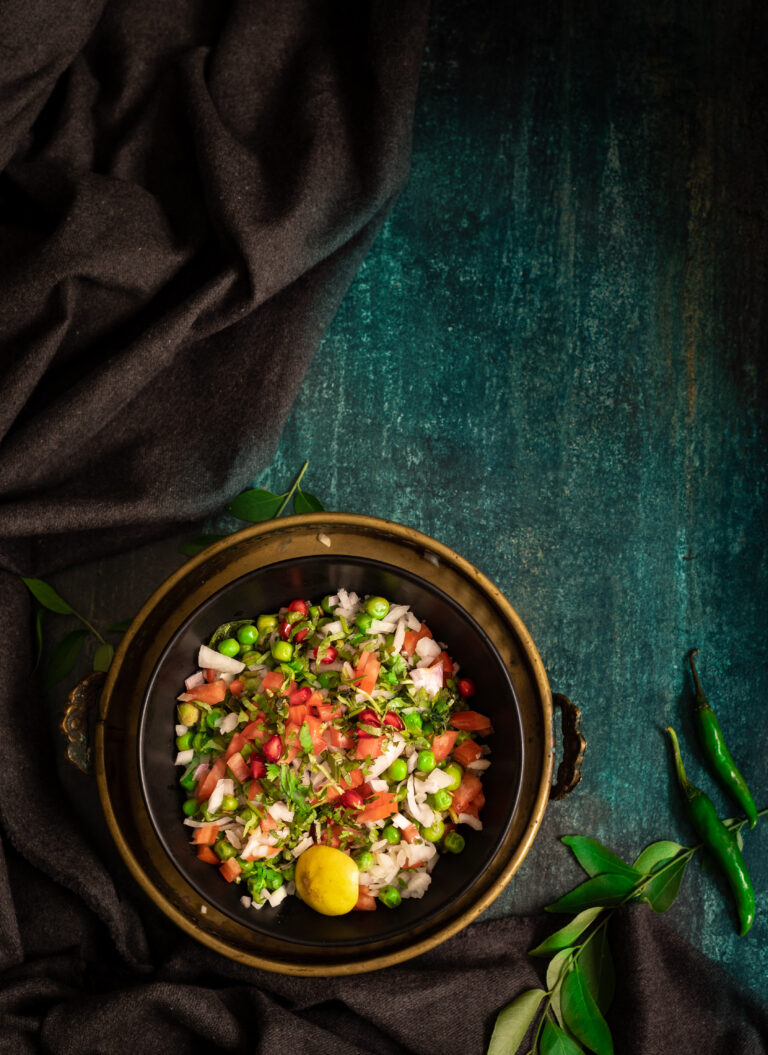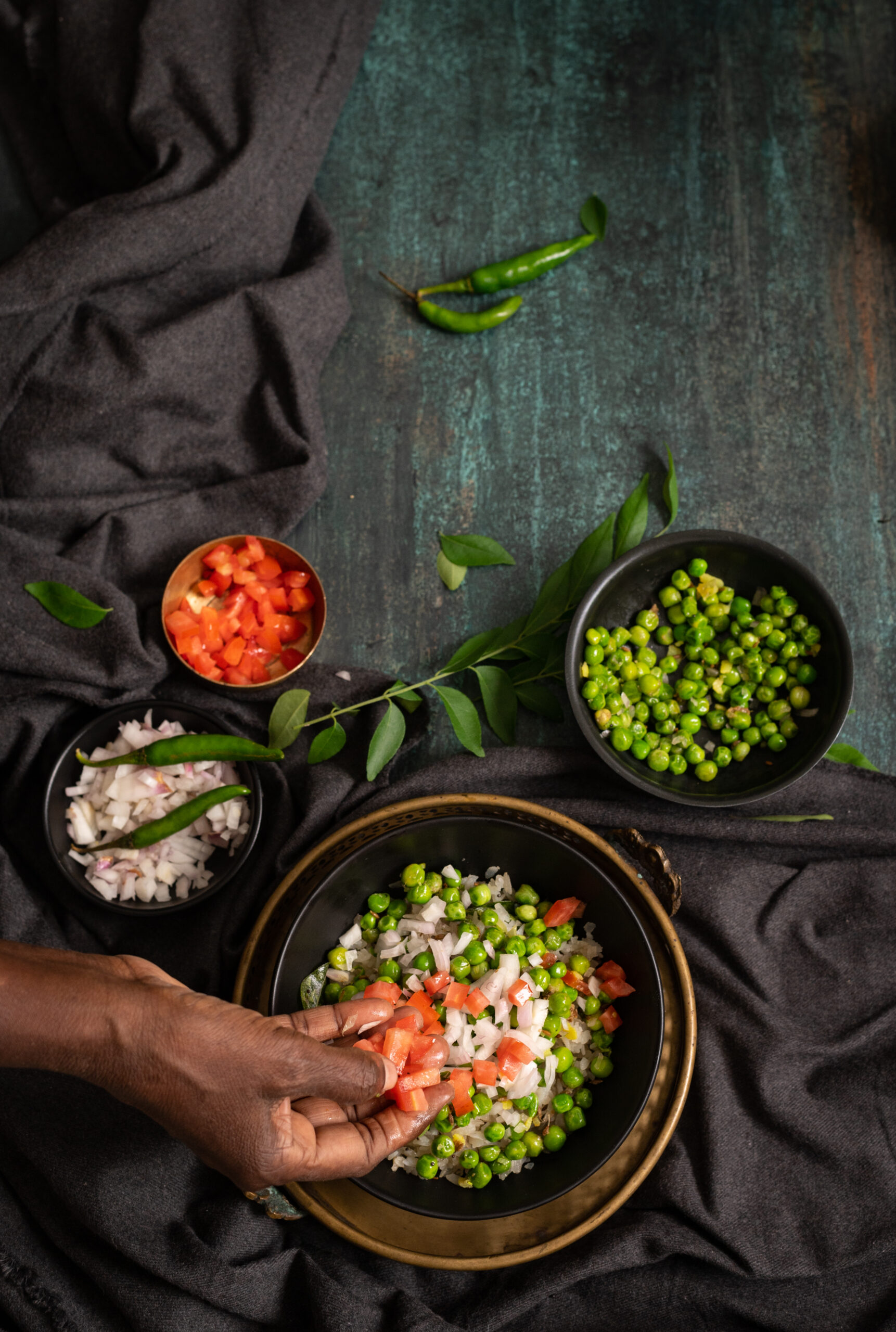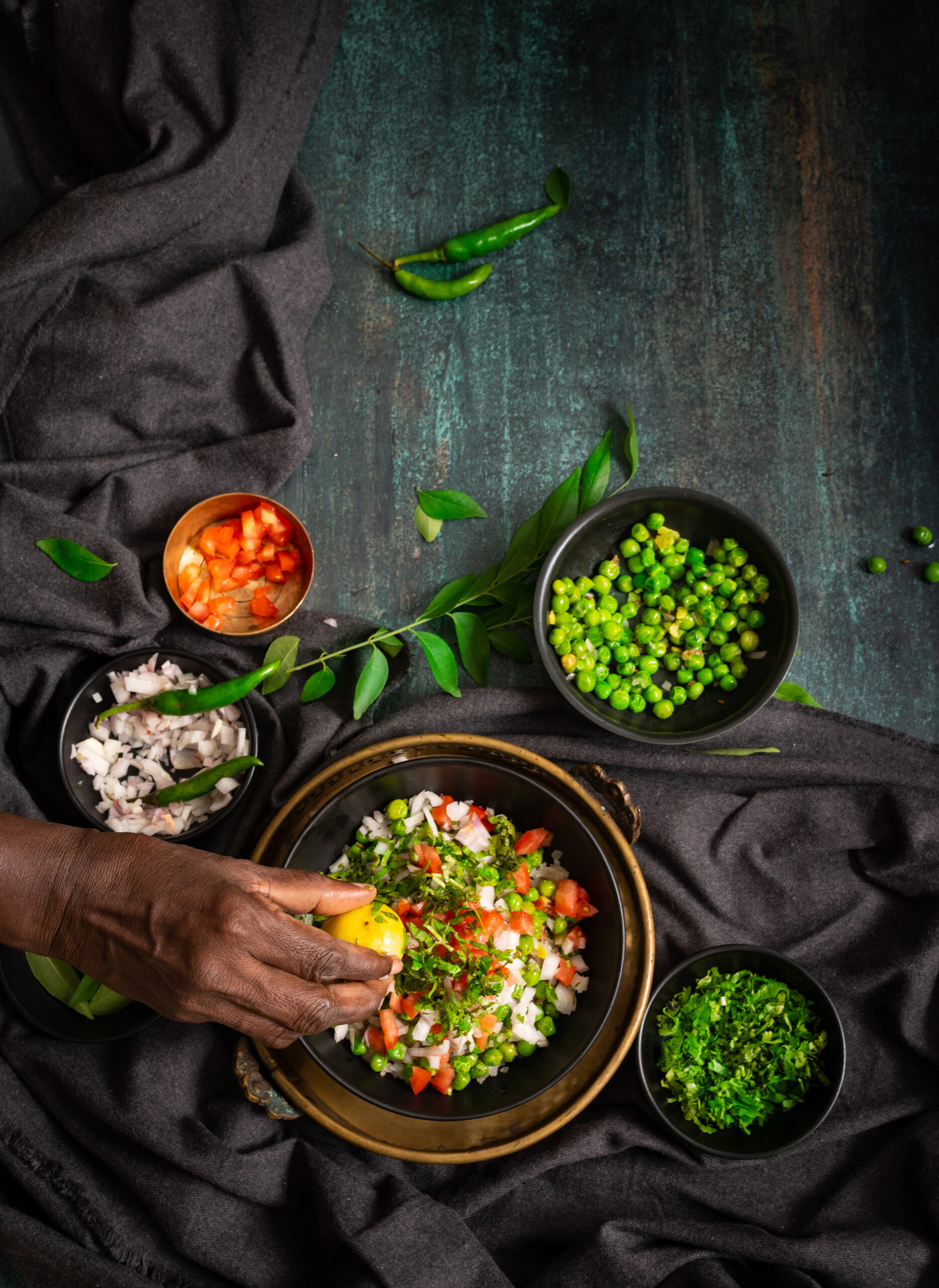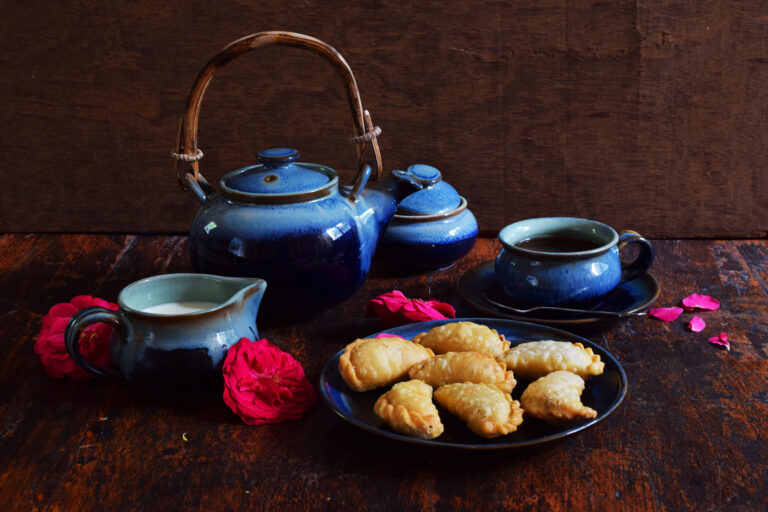
I have been very inspired to make some pea soup thanks to seeing it on the Instagram feeds of many people whom I’ve been following keenly lately. I find the bright green hue of pea soup very, very attractive. We feast with the eyes first, as I say often. The colour green itself denotes good health, promotes a sense of calmness, and has associations with healing. Peas are still in abundance on the market right now, as I mentioned in my previous post on peas paratha (I hope you enjoyed that one; always happy to hear from you!). So my inspiration, which became both my photographic and culinary craving, was fulfilled. So, of course, was my appetite.
The technique that I find works best while making soup is to ensure that the flavour of the vegetable used is not drowned through the addition of too many spices. What I also enjoy deeply is tasting the flavour of the vegetable itself. You may have noticed this about my zucchini soup recipe too, which kept things minimal so as to elevate the key element. Personally, I also prefer my food in general to not be intensely spicy. This is rather un-Indian of me, but I do love to savour every ingredient. To me, when you cook and eat mindfully, you can taste the season of the harvest, the sunshine and natural elements that raised the crop, the work of those who brought it to us, and of course the love within the preparation itself. There is something about such an experience that contributes to well-being, just as much as power-packed ingredients ensure that our health and immunity stay strong.
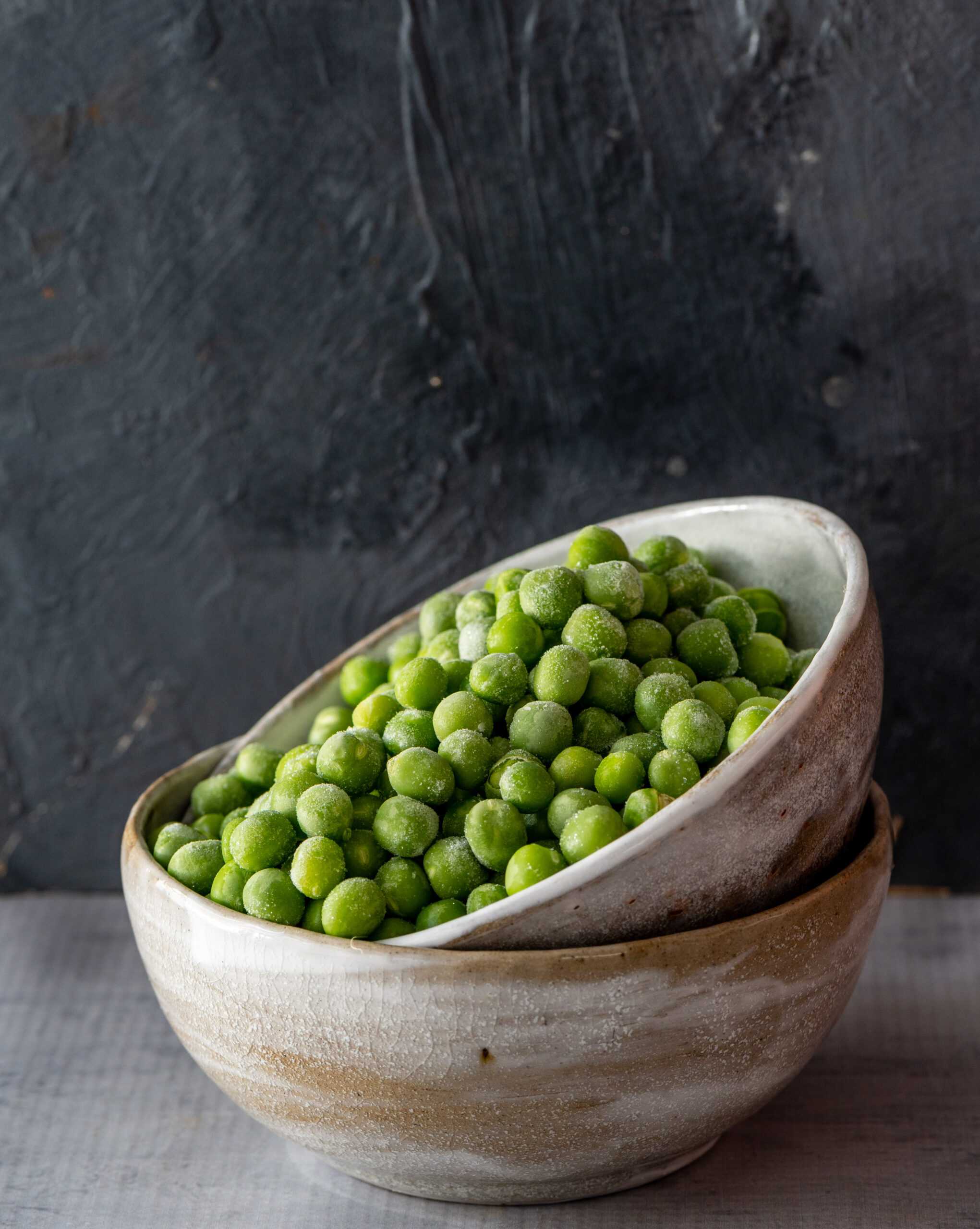
In fact, when I was studying Macrobiotics, we were taught to hand-crush rather than use a blender. So the ingredients would be coarsely ground. In a soup, we have not just the liquid, but could also chew on the small pieces. This was where I learned the unique pleasure of slowly tasting the vegetable properly. Coming from a traditional Indian household, I hadn’t really grown up with soups, even though my mother was very inquisitive about culinary methods and was among the first in our community to take baking and foreign cooking classes. So I did not get into them until much later, and my fondness for them is associated with that time in my life where I learned all about the Macrobiotics ethos and began to observe the difference it made to my life. In fact, have a slight preference for soups over salads (although I do love both, as you know), and that is probably for this reason.
A mindful and mildly-seasoned method of preparing soup helps you distinguish between the different kinds, the different vegetables used. In the case of this recipe, if you have access to homegrown or organic peas, you will especially notice the distinct flavour. Those can be particularly sweet and fresh. They also cook faster. Soups are easier to consume as well, and are both filling and light at the same time. I hope you’ll explore my other recipes in this category if you are a fan of them too.
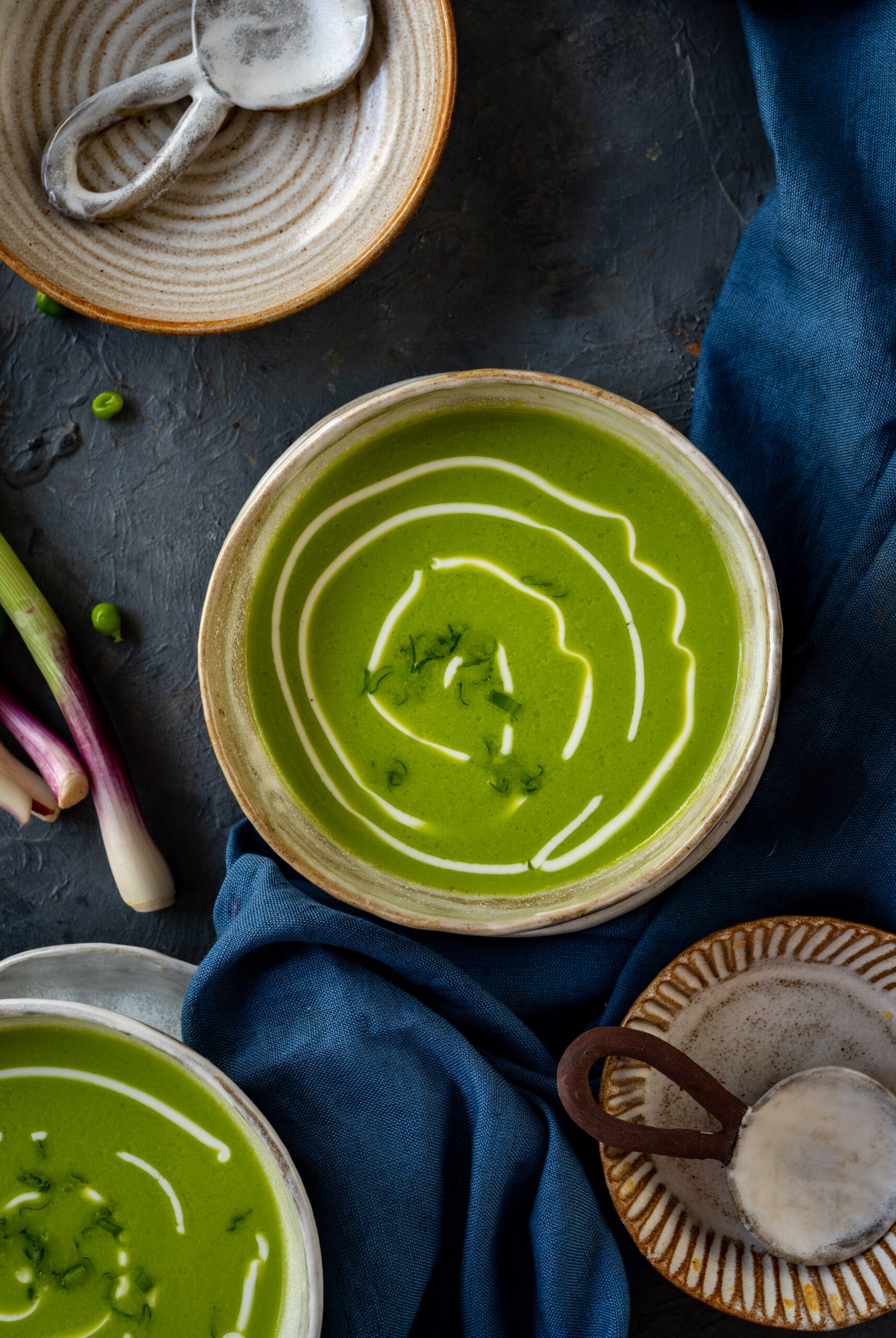
Pea Soup
(Yield: 2 servings)
1 cup shelled peas
¼ cup spring onions
2 teaspoons olive oil/butter
Salt to taste
A pinch of pepper
2 cups hot water
1 tablespoon fresh cream (for garnish)
Add the olive oil in a pan. Once it has heated, add the spring onions. Sauté for a few minutes, until tender.
Then, add the peas. Stir, lower the flame and cover with a lid. Allow the peas to cook until they are tender to the touch.
Add the hot water and then add salt and pepper, to your preferred degree of seasoning.
Stir, then remove from the flame. Allow to cool. Then, blend this peas mixture into a thick, coarse purée. You may use your blender for convenience, or you may experiment with the Macrobiotics way described earlier.
Return the blended mixture, now a proper soup, to the pot. Allow to cook, stirring occasionally. You may adjust the water quantity to your preference.
One it has cooked, scoop out the soup into bowls and serve garnished with fresh cream. You could also sprinkle some more spring onions, fresh and finely chopped.
As I said earlier, the secret to this one is really in keeping the spices as minimal as possible. I believe that salt, pepper and a hint of lime (if you like tanginess) are more than enough to add flavour to a good soup, and everything or anything else is an additional twist.
Soups are always soothing to consume. They really are a comfort food. I hope you’ll enjoy this one as much as I do, and that you have the kind of experience that I do when I have it – savouring the taste of the peas slowly and enjoying the warmth of the soup.
